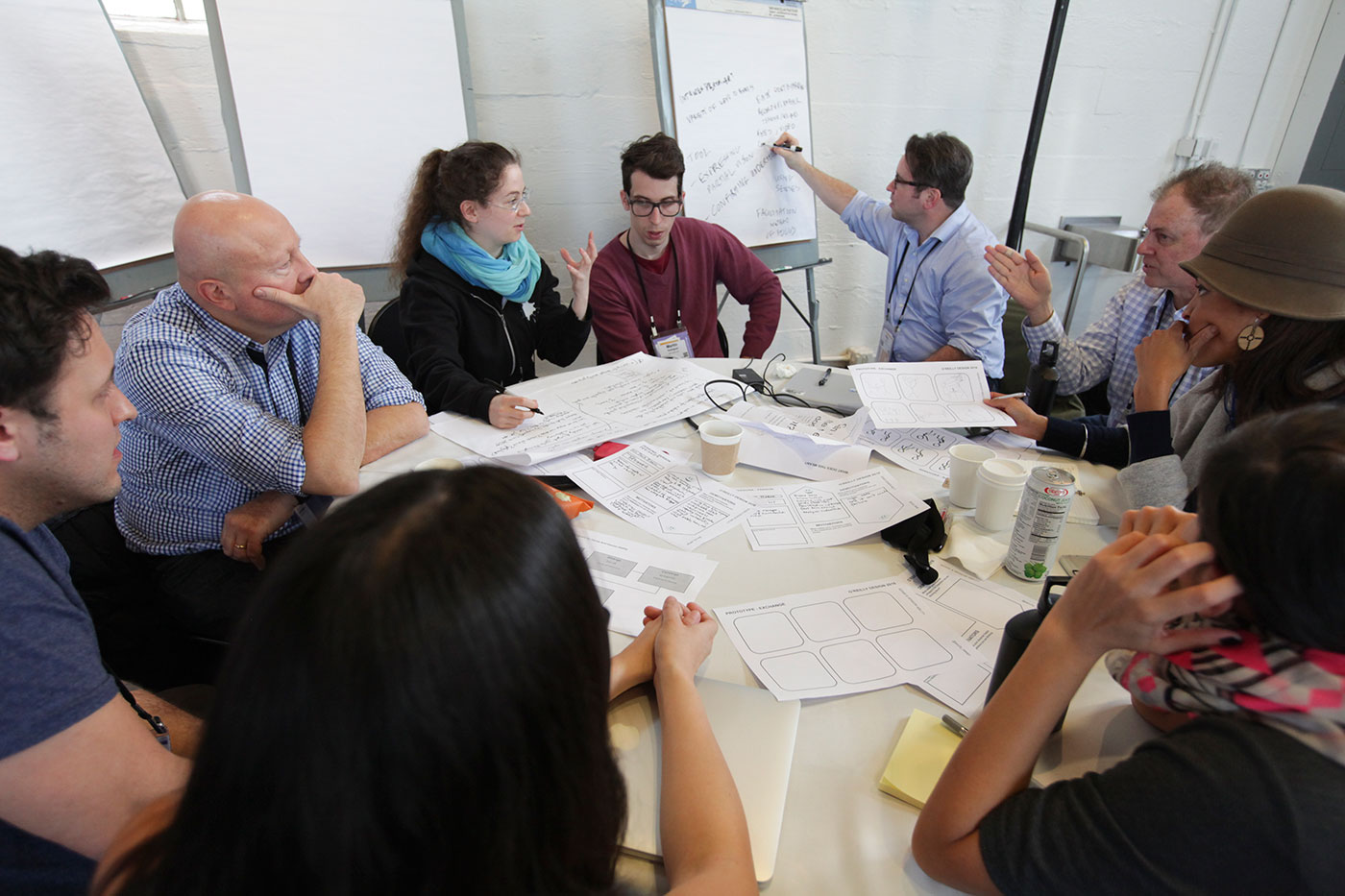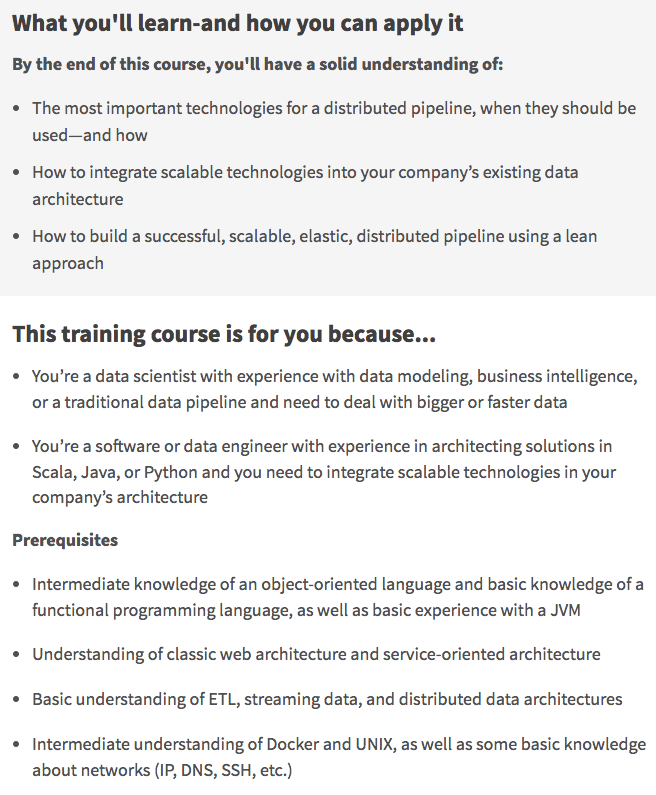How do you learn?
Shared learning: It's what we do at O'Reilly, and it's what we’d like to share with you.
 Shared learning
Shared learning
Learning isn’t a one-shot process: take the course, pass an exam, and get out. You learn by interacting with instructors and students, by assessing your progress, and using that to plan your next steps. It’s an ongoing feedback loop that involves everyone in the classroom (whether the classroom is virtual or physical).
At O’Reilly, we’ve thought a lot about how people learn. And we’ve built live training programs (both online and in-person) that allow people to learn in whatever way is best for them. We have built learning programs that work.
Learning is social
O’Reilly Media has always been a learning company. When we began to publish books in the mid-’80s, our editorial guidance for authors was to write as if they were “a friend looking over the reader’s shoulder, providing wise and experienced advice.”
In 2016, we’re about much more than books. We’ve long had instructional video and conferences. In the past year, we’ve introduced live online training, in addition to live in-person training at conferences and other locations. But the same standard applies: we want the people who learn with us to feel like they have an expert looking over their shoulders and providing seasoned advice.
How do we do that? It starts with realizing that learning isn’t just a one-way experience. When we analyzed conference attendance and early online courses, we saw that people participate as groups. More than 50% attend our online courses as teams. People don’t attend courses as teams just so they can hang out together during breaks; they attend as teams so they can learn from each other, apply their new knowledge to their particular situation, and bring that knowledge back to their co-workers. When a team attends training, the group learns much more than sum of the individual experiences.
Furthermore, we discovered that teams attend to hear what other teams ask. For example, another group attending may be further along their journey toward streaming analytics; they may have already encountered issues your team won’t hit for another six months. So learning isn’t just about what you need to know now, or what your teacher thinks you need to know now: it’s about interaction with other learners and their problems. It’s about taking advantage of other learnings to discover where you’ll be in six months or a year.
O’Reilly’s live training events—whether online or in person—offer instructor-led, hands-on courses, with an emphasis on the social aspects of learning. That’s in stark contrast to typical training products based on pre-recorded classes. Each course is led by an expert practitioner in the subject, someone working in industry. They’ve seen what works and what doesn’t—instead of just memorizing a syllabus and slide deck. These instructors guide you through hands-on course materials and they’re available to help answer your questions at any point. And you’re able to interact with other students, learning from their experience.
Learning is a feedback loop
You and your team have just finished a course. How do you know that you’ve learned? Assessment is one of the trickiest areas in education. Most “assessment” in the industry devolves into memory quizzes. But simply quizzing students on whether they’ve memorized the appropriate answers doesn’t tell you anything about learning.
O’Reilly integrates assessment into almost all aspects of our learning experiences. We focus on formative assessment—in other words, providing useful feedback—rather than “quantifying students.” Our work on computable content opens the door for live coding as part of assessment. We don’t give quizzes that test whether you can remember the right answer: we can give actual coding assignments, and evaluate learners’ solutions.
This kind of assessment goes hand-in-hand with instructor feedback: our instructors can see students’ weaknesses and can help them through tough spots, rather than just assign a grade. And we can recommend content for future learning, with full knowledge of the students’ strengths and weaknesses. If a student is weak in some areas, additional background may be helpful. If a student is particularly strong, she may be able to skip ahead. All this is part of our subscription-based learning platform.
Offerings: What do you want to learn?
You can have the best teachers and teaching methods in the world; it isn’t worth anything if they aren’t teaching courses that are relevant to your needs. In the next two months, our live training calendar includes courses on data science, design, operations, security, software architecture, programming, and business. Topics range from design for the Internet of Things to programming in Python and distributed services with Spark. We have courses for beginners, to help them build the broad structural literacy that will help them to learn more; we have courses for experts, to help them drill down into specialized topics. And that’s just the start: we’re still building out the calendar.
All of our courses feature a learning promise. That’s a “Roles to Goals” description of the intended audience, what prerequisites are required, what you’ll learn, why it matters, and how you’ll apply it.

That’s how we approach learning at O’Reilly. We recognize that learning is social, and we’ve built a platform that allows instructor and students to interact with each other. We’ve engaged instructors who are expert practitioners in their fields, and who have hard-earned wisdom to share with their students: they’re familiar with the best (and worst) practices, the trade-offs, the gotchas that can drive a student crazy. We’ve built tools that make assessment part of a feedback loop, so instructors can “invert the classroom” and focus on providing help where it’s most needed. And we’re building a rich program of in-person learning events: you can attend online, at conferences, at our Boston training center, or at other venues.
Shared learning: that’s what we do, and we’d like to share that with you.
